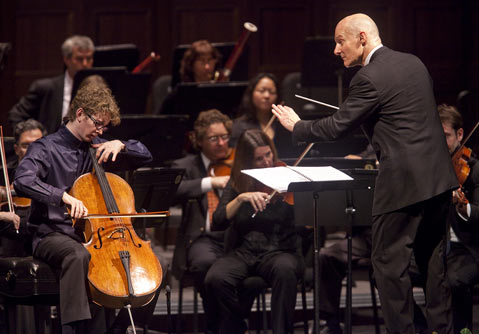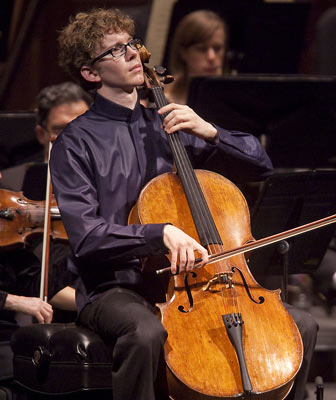Santa Barbara Symphony Conducted by Mark Russell Smith
S.B. Symphony Welcomes a Guest Conductor and a Cello Soloist

The challenge for any symphony orchestra these days lies in making the familiar new, and the new familiar; that is, generating new interest in old favorites and introducing new works into the repertoire. The Santa Barbara Symphony rose to the challenge on Saturday night, March 20, under the cheerful, confident, and able direction of Mark Russell Smith, currently on loan from the St. Paul Chamber Orchestra, the Quad City Symphony Orchestra, and a number of other distinguished groups.

The evening began with a work that even people who have never heard of its composer know well: the Adagio for Strings by Samuel Barber. This work became the 20th-century’s version of the Pachelbel Canon because it fits so well into film scores, especially when someone dies in slow motion, but like Hamlet, it remains a moving and interesting work, despite many efforts to wear it out. But Smith and the S.B. Symphony did more than present a competent performance—they gave it new depth, with perfectly balanced harmonies, and carefully measured crescendos, showing us the contours of the work with only our imaginations providing the images to accompany it.
Osvaldo Golijov’s Ausencia (“Absence”) followed, with soloist Joshua Roman starting the work with a remarkable cadenza, a complex tour de force with allusions to J.S. Bach and Max Bruch, leading seamlessly into an orchestral meditation on the deaths of two great Argentine musicians, Carlos Gardel and Astor Piazolla. Like Barber’s Adagio, Ausencia covers an uncanny and complex emotional landscape of sorrow leading to recollection, with powerful chords giving way to hints of Gardel’s beloved tango. The two works played sequentially almost comment on each other, amplifying their effects in memory, an effect Smith clearly had in mind.
More cheerful and traditional works rounded out the evening. Smith, Roman, and the S.B. Symphony happily rolled along with Tchaikovsky’s Variations on a Rococo Theme for Cello and Orchestra, emphasizing its light main theme and treating the variations in minor keys gently. After the intermission, Smith and the symphony showed us how to break through melancholia with Schumann’s Symphony No. 2. There’s nothing like a strong dose of brass in C major to cure what ails you—if only it had cured poor Schumann, whose life was cut short by a painful illness. Sometimes, the lowest points in our lives can help us imagine the highest of visions.



